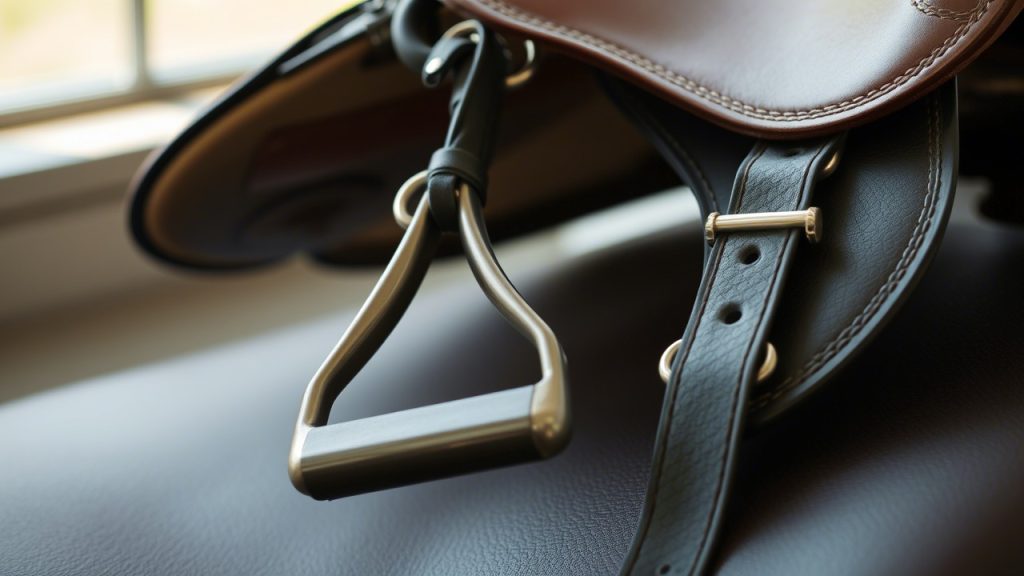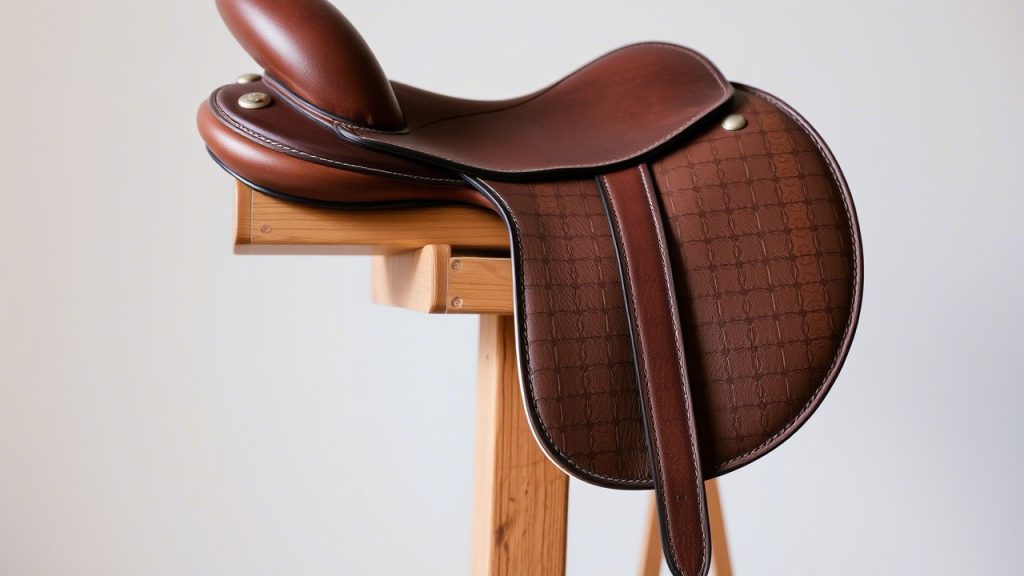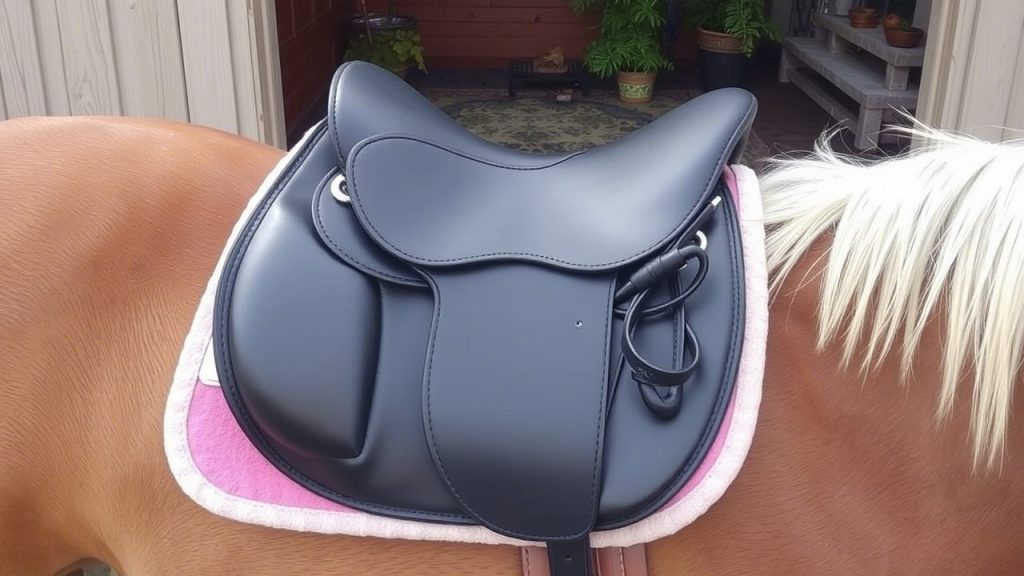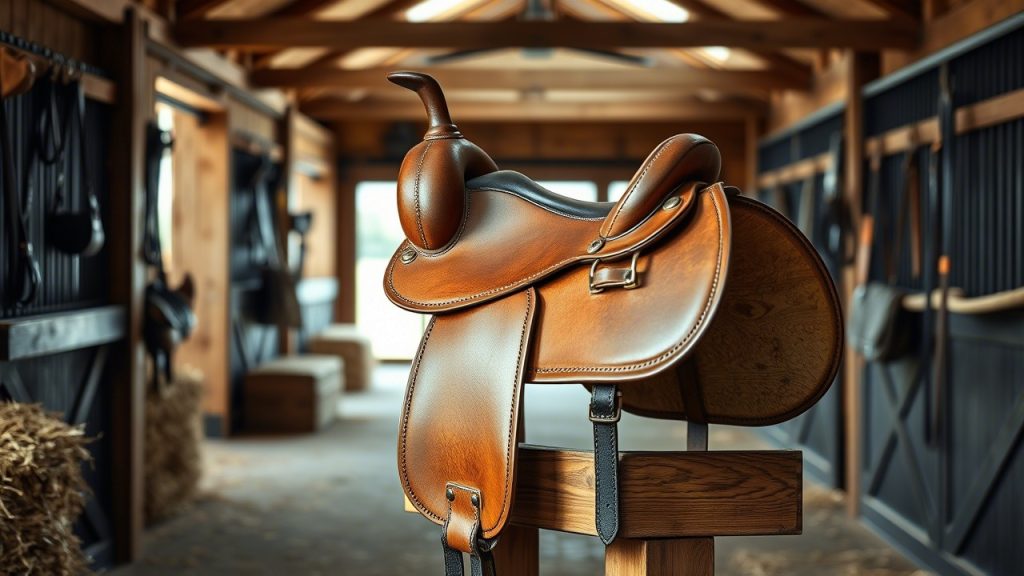Cantering gracefully is a thrilling experience that every rider strives to master. Whether you’re a beginner or an advanced equestrian, maintaining perfect balance in the canter can be challenging. The right saddle plays a crucial role in helping riders stay balanced, secure, and connected with their horse during this dynamic gait.
We’ll explore the 7 best horse saddles to stay balanced in canter—carefully chosen for their design, comfort, and support. We’ll also cover what features to look for when selecting a saddle to improve your balance, how different saddle types impact cantering, and answer common questions about saddle fit and riding balance.
Why Staying Balanced in Canter Is Important
The canter is a three-beat gait that requires coordination and timing from both horse and rider. Good balance during canter helps in:
- Reducing strain on horse and rider: Proper balance distributes weight evenly and prevents discomfort or injury.
- Improving control: Staying centered makes aids clearer, helping the horse respond better.
- Enhancing rider confidence: Feeling secure in the saddle boosts rider confidence, encouraging better performance.
- Facilitating smooth transitions: Balanced riders influence smoother transitions into and out of the canter.
A saddle that complements your body and your horse’s movement can significantly aid in achieving these goals.
What to Look for in a Saddle to Stay Balanced in Canter
Choosing the right saddle requires attention to specific features that support rider stability during canter:
- Deep Seat: Provides a secure, centered position that reduces forward or backward slipping.
- Knee Rolls and Thigh Blocks: Help keep your legs in place, stabilizing your lower body.
- Close Contact Design: Increases feel and communication between rider and horse.
- Proper Fit for Horse: A saddle that fits your horse’s back correctly prevents discomfort and encourages freer movement.
- Lightweight Construction: Minimizes saddle weight, reducing fatigue and allowing better rider movement.
- Adjustable Features: Some saddles offer adjustable gullets or panels to adapt to your horse’s changing shape.
- Balanced Flap Length: Helps position your leg correctly relative to the stirrup.
Keeping these factors in mind will guide you in selecting a saddle that enhances your canter balance.

1. CWD SE02 Close Contact Saddle
Overview
The CWD SE02 is a premium close contact saddle designed for riders who want maximum communication and balance during dynamic movements such as cantering. It’s crafted with a deep, well-balanced seat and ergonomically placed knee blocks.
Features
- Deep seat with excellent hip angle
- Knee blocks and thigh blocks for leg security
- Lightweight yet durable leather
- Available in multiple flap sizes for customized fit
Why It’s Great for Canter Balance
The SE02’s deep seat keeps you centered over the horse, while the knee and thigh blocks stabilize your legs during canter’s rhythmical motion. The saddle’s close contact design enhances your feel, allowing for subtle corrections that maintain balance.
2. Stubben Genesis Dressage Saddle
Overview
Designed specifically for dressage riders, the Stubben Genesis combines a deep seat and forward flap design to encourage an ideal leg and seat position.
Features
- Deep, padded seat for comfort and security
- Forward-cut flap for leg freedom
- Adjustable tree to fit different horses
- Soft, high-quality leather
Why It’s Great for Canter Balance
The deep seat and ergonomic design help riders sit deeply and maintain balance in canter transitions. Its adjustable fit ensures your horse is comfortable, promoting smooth and willing movement.
3. Wintec 500 All-Purpose Saddle
Overview
The Wintec 500 is a popular synthetic saddle that offers great versatility and comfort for riders learning to balance at the canter.
Features
- Deep seat with adjustable air panels
- Synthetic, lightweight, and easy to maintain
- Adjustable gullet system for horse fit
- Integrated knee blocks
Why It’s Great for Canter Balance
The air panels and adjustable gullet allow for a custom fit, ensuring horse comfort which improves smoothness in canter. The deep seat and knee blocks give riders added confidence and support.
4. Bates Caprilli Close Contact Saddle
Overview
The Bates Caprilli saddle is engineered for close contact and rider security, with an emphasis on shock absorption to ease rider comfort during faster gaits.
Features
- Deep seat and padded knee rolls
- Adjustable panels for perfect fit
- Shock-absorbing technology for rider comfort
- Durable synthetic leather
Why It’s Great for Canter Balance
The shock absorption reduces jarring during canter, while knee rolls keep the leg steady. The deep seat ensures the rider remains centered, making it easier to follow the horse’s movement smoothly.
5. Antares Dressage Saddle
Overview
Antares saddles are synonymous with high-end craftsmanship and rider comfort. The dressage model offers a deep, well-contoured seat designed to stabilize the rider during canter.
Features
- Deep, padded seat with narrow twist for leg contact
- Adjustable tree and panels
- Premium leather with superior grip
- Thigh blocks for leg security
Why It’s Great for Canter Balance
The narrow twist and deep seat help maintain an upright, centered position, critical for balance in canter. Customizable fit enhances horse comfort, improving stride consistency.

6. Pessoa Hybrid Saddle
Overview
A versatile saddle designed for eventers, the Pessoa Hybrid combines elements of jumping and dressage saddles, offering a balance between support and freedom of movement.
Features
- Medium-deep seat with knee and thigh blocks
- Durable leather construction
- Balanced flap position to aid leg placement
- Comfortable, padded panels
Why It’s Great for Canter Balance
Its hybrid design allows riders to stay balanced whether sitting deep or lightly seated during canter. The padded blocks stabilize legs while allowing freedom to move as needed.
7. Circle Y Flex2 Trail Saddle
Overview
This Western-style saddle is designed for trail riders who need security and comfort for extended canters over varied terrain.
Features
- Deep, supportive seat with padded cantle
- Sturdy fenders and stirrups for leg stability
- Lightweight synthetic materials
- Comfortable tree fit for horse and rider
Why It’s Great for Canter Balance
The deep seat and solid leg support help riders maintain a secure, balanced position over rough terrain and longer canters, reducing fatigue and improving control.
How to Ensure Your Saddle Fits for Optimal Canter Balance
Even the best saddle won’t help if it doesn’t fit you or your horse properly. Here are some tips to ensure proper fit:
- Work with a Professional Saddle Fitter: They can assess your horse’s back shape and movement.
- Check Clearance: Ensure there’s enough clearance at the withers and spine.
- Assess Balance: The saddle should sit level on your horse’s back.
- Observe Horse Movement: Watch for signs of discomfort or resistance.
- Check Your Position: Sit in the saddle to see if it supports a centered, balanced posture.

Tips for Staying Balanced in Canter Beyond Saddle Choice
- Strengthen Your Core: A strong core supports better balance.
- Practice Two-Point Position: Helps develop independent seat and leg.
- Use Visual and Physical Aids: Mirrors and instructors can provide feedback.
- Focus on Relaxation: Tension reduces balance; stay calm and fluid.
- Consistent Practice: Balance improves with repeated practice and experience.
Frequently Asked Questions
1. Why is saddle fit so important for canter balance?
An ill-fitting saddle can cause discomfort, distracting the horse and rider, making it harder to stay balanced during dynamic movements like canter.
2. Can I use the same saddle for all gaits?
While many saddles are versatile, some are designed specifically to support certain gaits. Saddles with deeper seats and knee rolls generally aid canter balance best.
3. How do knee rolls help with balance?
Knee rolls stabilize the rider’s leg position, preventing slipping and providing support during the rhythmic motion of canter.
4. Are synthetic saddles good for beginners?
Yes, synthetic saddles are lighter, affordable, and easier to maintain, making them ideal for riders developing balance.
5. What is the best way to test saddle fit?
Have a professional fitter evaluate your saddle, and observe your horse’s comfort and movement while riding.
6. Can a saddle help with rider confidence?
Absolutely. A comfortable, supportive saddle helps riders feel secure, which naturally improves confidence and balance.
7. Is a deep seat always better for canter balance?
Generally, yes, but too deep a seat can restrict movement. Find a balance that supports you without hindering flexibility.
8. How often should I have my saddle checked?
Ideally every 6-12 months, or when your horse’s condition changes, to ensure consistent fit.
9. Can custom saddles improve canter balance?
Custom saddles offer personalized fit, maximizing comfort and balance for both horse and rider, often leading to better performance.
Conclusion
Staying balanced in the canter is fundamental to effective riding and horse welfare. The 7 best horse saddles to stay balanced in canter highlighted in this review are excellent choices, each offering unique features that promote rider stability, comfort, and communication with the horse.
Remember, beyond choosing the right saddle, proper fit and rider technique are equally important. Combine a well-fitted saddle with consistent practice and fitness to master a balanced, confident canter.





